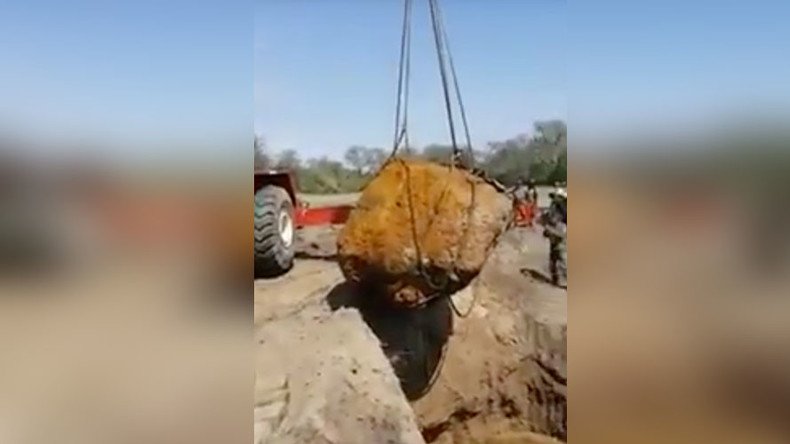Enormous 4,000yo meteorite dug up in Argentina (VIDEO)

A meteorite weighing a whopping 31 metric tons, believed to have hit Earth some 4,000 years ago, has been discovered in Argentina. The enormous space rock could be the second largest ever found on our planet, according to experts.
The giant meteorite, christened ‘Gancedo’ after a nearby town, was found over the weekend in the area of Campo del Cielo in the Chaco province, situated in the northeast of the country.
It is the second giant meteor to be found in Campo del Cielo - a renowned meteorite crash site covered in craters from an iron meteor shower more than 4,000 years ago.
Footage has been released showing the excavation of the colossal rock which was buried five-meters deep.
Analysis is underway to determine whether the Gancedo can snatch the title of the world’s second largest meteorite from the ‘El Chaco’ meteorite discovered in the same field in 1980.
_meteorito El Chaco/Campo del Cielo,Ar. [37 tonnes, is the second heaviest single-piece meteorite recovered on Earth] pic.twitter.com/EXmh8Qfh1S
— J.PR [el_lobo.arp] (@puigreixach) November 18, 2013
El Chaco weighs in at 37 metric tons and although this new find has been confirmed to weigh close to 31 metric tons, the Astronomy Association of Chaco needs to verify the rock as a meteorite and carry out a second weigh-in to corroborate the measurement before the No.2 spot is official.
Mario Vesconi, president of the Astronomy Association of Chaco, said that the size and weight of the celestial rock came as a surprise.
"We will weigh it again,” he said. “Apart from wanting the added confidence of a double-check of the initial readings we took, the fact that its weight is such a surprise to us makes us want to recalibrate."
Estuvimos recorriendo el parque y viendo esta maravilla .- Este descubrimiento es una noticia a nivel mundial pic.twitter.com/XZUYQltT9d
— Livio Gutierrez (@Livio_Gutierrez) September 12, 2016
The undisputed title of the world’s largest meteorite belongs to an extraordinary 60 metric ton rock in Namibia called the Hoba.












